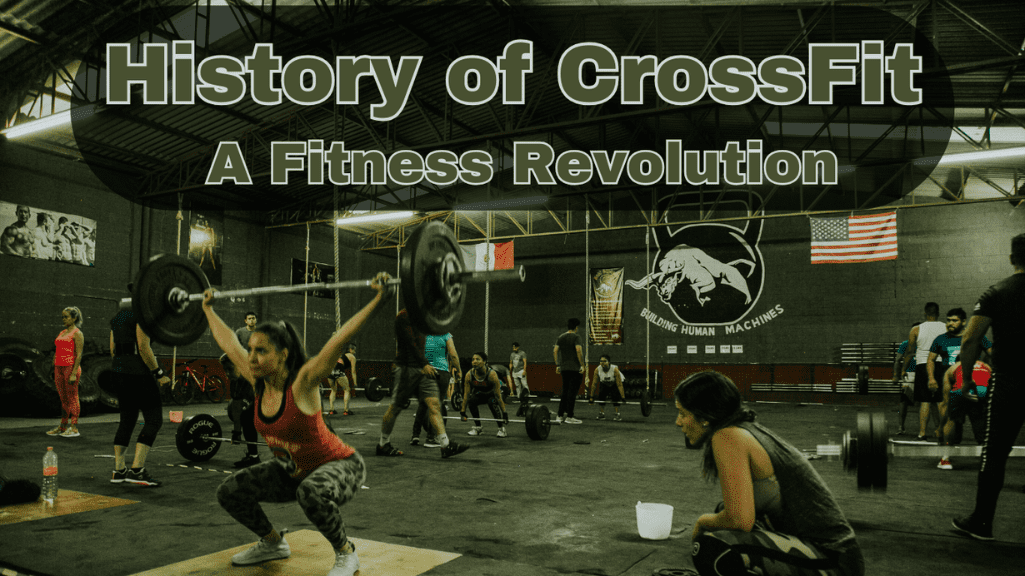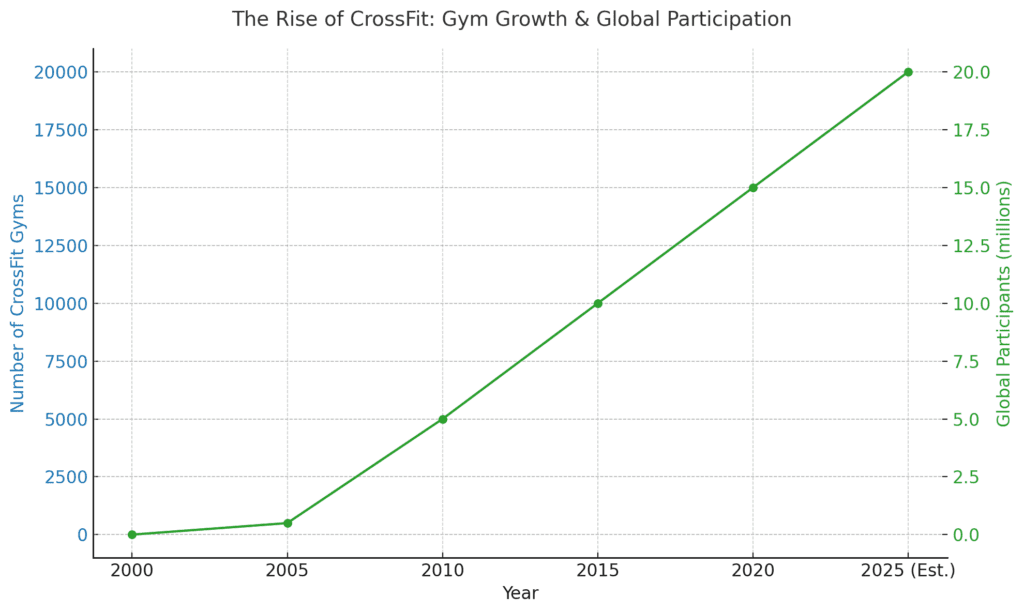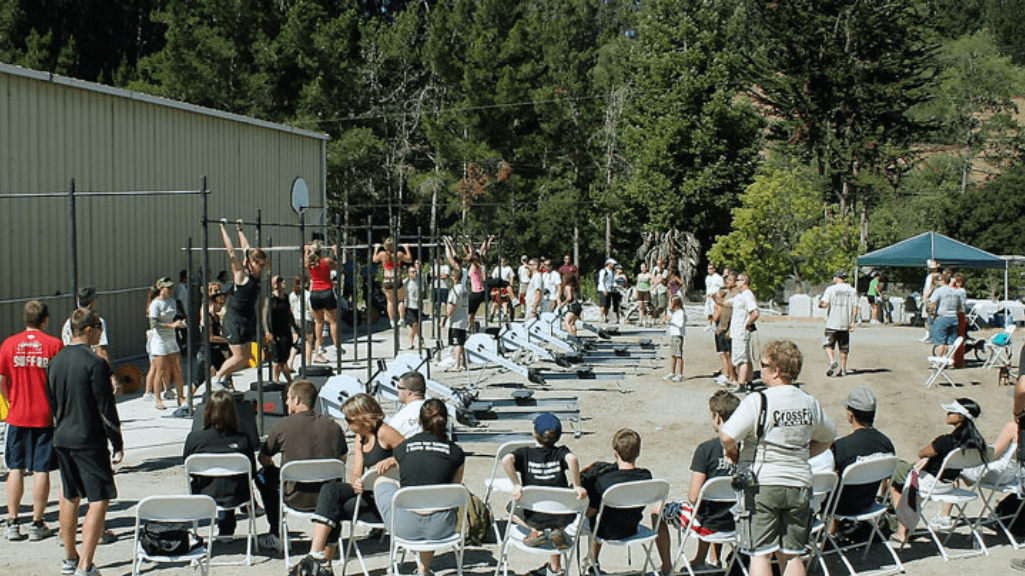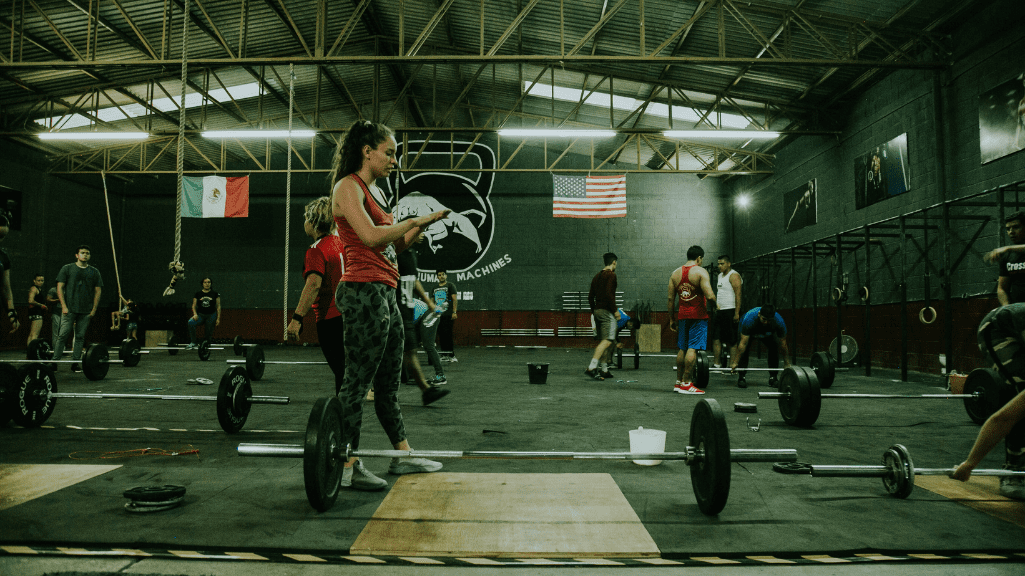The History of CrossFit: What Is CrossFit?
In this article, we delve into the history of CrossFit, exploring its transformative journey from a bold fitness experiment to a global movement that has redefined training, community, and competition, while examining its lasting influence and the questions shaping its future.
CrossFit has grown from a niche fitness program into a worldwide phenomenon, transforming how millions approach their health and wellness. Known for its intensity and community-driven ethos, CrossFit is more than just a workout\u2014it’s a lifestyle that blends physical and mental toughness. But what exactly makes CrossFit stand out?

At its core, CrossFit is a branded fitness regimen that incorporates a variety of training methods, including:
- High-Intensity Interval Training (HIIT)
- Weightlifting
- Plyometrics and powerlifting
- Gymnastics and functional movements
What sets CrossFit apart is its core philosophy: functional movements performed at high intensity. This means the workouts focus on actions that replicate everyday tasks, such as lifting, jumping, and running, to improve overall fitness and make everyday life easier.
CrossFit’s influence extends beyond the gym. It’s also recognized as a competitive sport, with the annual CrossFit Games showcasing elite athletes who compete in events that test strength, endurance, agility, and mental resilience. These competitions have helped cement CrossFit’s reputation as a rigorous but rewarding pursuit.
Subscribe And Get Our Free E-Book:Unlocking The Power Of Nutrition-Supplements, Substitutes, and Superfoods!
Why CrossFit Is Worth Exploring
Understanding the history of CrossFit is key to appreciating why it’s become such a cultural force in fitness. From its humble beginnings in California to becoming a global movement, CrossFit has reshaped the fitness industry by emphasizing community, accountability, and personal growth.
Here’s why CrossFit is so impactful:
- Community Focus: CrossFit gyms (known as “boxes”) thrive on camaraderie, where participants motivate and support each other during workouts.
- Holistic Approach: Beyond workouts, CrossFit emphasizes nutrition, mental toughness, and lifestyle changes to promote overall well-being.
- Accessibility: Workouts can be scaled to accommodate people of all fitness levels, from beginners to elite athletes.
CrossFit is more than a trend; it’s a method that combines science, grit, and teamwork to transform lives. As we explore the history of CrossFit, we’ll uncover how this revolutionary fitness approach has made an enduring mark on the world of health and wellness.
The history of CrossFit Video
The History of CrossFit: Origins of CrossFit
The history of CrossFit begins with a single idea: creating a fitness program that is accessible, measurable, and adaptable for people of all fitness levels. This vision was brought to life by Greg Glassman, the founder of CrossFit, whose innovative approach to training would go on to revolutionize the fitness industry.
The Founder: Greg Glassman
Greg Glassman grew up as a gymnast, and his experiences in the sport shaped the foundation of CrossFit. Gymnastics demanded a mix of strength, flexibility, and agility, and this inspired Glassman to design a program that incorporated these elements into functional, everyday movements. He believed fitness should not only enhance athletic performance but also improve real-world capabilities, making individuals stronger, faster, and more resilient in their daily lives.

Glassman’s idea was simple yet powerful: to create a fitness regimen that could be measured and compared. He wanted people to track their progress, whether by completing workouts faster, lifting heavier weights, or increasing the number of repetitions. This focus on measurable results became one of CrossFit’s defining features, setting it apart from other fitness programs of the time.
Early Development
The first CrossFit gym, CrossFit Santa Cruz, was established in 2000. Located in California, this humble space became the birthplace of a movement that would eventually take the fitness world by storm. Initially, Glassman’s goal was to develop a program focused on general physical preparedness (GPP). The idea was to help individuals prepare for the unknown and the unknowable, whether that meant lifting a heavy object, running a long distance, or simply navigating daily tasks with ease.
From the beginning, CrossFit’s workouts were designed to be scalable, allowing people of all abilities to participate. Whether you were a professional athlete or a complete beginner, the program could be adjusted to match your fitness level while still providing a challenging experience. This adaptability played a key role in the rapid growth of CrossFit, as it appealed to a diverse audience looking for effective, results-driven training.
CrossFit’s Core Tenets
As the program evolved, CrossFit’s core tenets became more clearly defined, forming the backbone of its methodology:
- Constantly Varied Functional Movements: Workouts are intentionally varied to keep the body guessing and to prevent plateaus. Movements mimic real-life activities like squatting, lifting, and pulling, ensuring functional strength and endurance.
- Performed at High Intensity: Each workout is designed to push participants to their limits, maximizing calorie burn and improving overall fitness in a short amount of time.
- Measurable and Competitive: CrossFit introduced a system where participants could measure their progress through metrics like time, weight, or rounds completed. This measurable aspect fosters a competitive spirit, both individually and within the community.
These principles set CrossFit apart, creating a program that wasn’t just about exercise but about achieving measurable, tangible improvements in fitness. The emphasis on general physical preparedness also meant that CrossFit wasn’t specialized for one sport or discipline\u2014it was designed for life.
The Community Aspect
One of the most remarkable elements of CrossFit’s rise was its ability to foster a strong sense of community. From the very beginning, workouts were performed in group settings, where participants encouraged and motivated each other to finish challenging routines. This communal environment became a defining characteristic of CrossFit, as it created a supportive network that went beyond physical fitness.
CrossFit Santa Cruz laid the foundation for what would later become a global phenomenon. By combining effective training methods with a community-driven approach, Greg Glassman’s vision for CrossFit quickly began to attract attention.
A Revolution in Fitness
The history of CrossFit is as much about its philosophy as it is about its origins. By prioritizing measurable results, functional training, and inclusivity, CrossFit redefined what fitness programs could achieve. It became more than a workout; it became a cultural movement that continues to inspire millions around the world.

History of CrossFit: The Birth and Evolution
Affiliate Model
The history of CrossFit is closely tied to the introduction of its unique Affiliate Model. This model allowed individual gym owners to license the CrossFit name and methodology, creating a network of affiliated gyms, often referred to as “boxes.” The low-cost franchising model was designed to give gym owners flexibility, empowering them to operate their businesses independently while maintaining a connection to the broader CrossFit community.
Key Elements of the Affiliate Model:
- Low-Cost Entry: Gym owners paid an annual affiliation fee, which started at $3,000 in 2011 and increased to $4,500 by 2024, ensuring a cost-effective way to bring CrossFit’s approach to fitness to their local communities.
- Flexibility: Owners had the freedom to customize their programs and operate under their own management style, maintaining the heart of what makes CrossFit so personal and empowering.
The Online Presence
From its inception, CrossFit leveraged the power of the internet to spread its methodology. History of CrossFit’s early adoption of digital platforms helped the movement expand rapidly across the globe. CrossFit began sharing daily workouts, known as Workouts of the Day (WODs), for free online, making the training accessible to a wider audience.
Benefits of CrossFit’s Online Presence:
- Global Reach: By utilizing the internet, CrossFit created a vast online community where members could engage and interact, sharing progress, strategies, and encouragement.
- Accessibility: Providing daily workouts for free allowed individuals to participate regardless of their location, fostering a sense of inclusivity and collaboration across borders.
The Introduction of the CrossFit Games (2007)
The history of CrossFit took a significant turn in 2007 with the birth of the CrossFit Games. Initially a small, grassroots competition held at a ranch in Aromas, California, the Games evolved into a global event that brought together athletes from around the world to compete in fitness tests that measure endurance, strength, and athleticism.

Evolution of the CrossFit Games:
- Grassroots Beginnings: From a small, local competition with a handful of participants, the Games quickly gained momentum, drawing more competitors and attention.
- Global Event: Over the years, the Games grew into a world-renowned competition, attracting top-tier athletes and sponsorship from major brands. This transformation solidified CrossFit’s status not just as a fitness methodology but as a legitimate sport.
The Components of History of CrossFit: Workouts, Functional Fitness, and Holistic Training
At the heart of history of CrossFit lies the Workout of the Day (WOD), a daily exercise regimen that embodies the core principles of CrossFit. The WOD is designed to be varied, functional, and intense, providing a full-body workout that challenges individuals to improve across multiple domains of fitness. CrossFit workouts are not only about physical performance but also foster a strong sense of community and competition.
Types of Workouts in CrossFit:
- AMRAP (As Many Rounds As Possible): This format encourages athletes to complete as many rounds of a given workout as possible within a set time. It promotes endurance and mental toughness, as participants are constantly pushed to maintain a high level of intensity while balancing the number of reps and exercises within the time limit. AMRAPs can range from several minutes to an hour, depending on the specific workout. They are an excellent way to track progress over time as individuals aim to improve the number of rounds completed.
- EMOM (Every Minute on the Minute): In this format, athletes perform a specific number of reps or exercises every minute, creating a challenging pacing element. EMOM workouts often push participants to their limits as they learn how to manage time effectively while maintaining form and intensity. This format helps build both muscular endurance and mental focus, as competitors must complete the set task within a minute to start fresh for the next round.
- Hero Workouts: These workouts are named in honor of fallen service members, first responders, or individuals who made sacrifices for their communities. Hero workouts are usually intense, consisting of high-rep movements and grueling combinations of functional exercises. These workouts challenge both physical and emotional resilience, as participants push through extreme fatigue and physical pain while paying homage to those being memorialized.
Comparison with Traditional Workouts and Sports
When compared to traditional workouts and conventional sports, CrossFit stands out for its holistic approach to fitness. Traditional workouts often focus on specific muscle groups or isolated skills, such as weightlifting or cardio. In contrast, CrossFit integrates a wide variety of exercises into its programming, creating a balance between strength, endurance, flexibility, and agility. This comprehensive approach ensures that participants are well-rounded athletes capable of handling a variety of physical demands.
Sports, on the other hand, are typically skill-focused and competitive, often limiting the scope of training to specific tasks. For example, athletes training for a sport like football or basketball focus primarily on movements directly related to their performance on the field or court. CrossFit bridges this gap by incorporating the competitive and social elements of sports with the broad fitness objectives found in functional training. This allows participants to perform well in various domains, making CrossFit a unique combination of sport and fitness methodology.

The Functional Fitness Approach
History of CrossFit emphasizes a functional fitness approach that prepares individuals for real-life challenges. Unlike traditional workout regimens that may only focus on aesthetics or specific abilities, CrossFit aims to improve practical, everyday movement. Functional fitness includes activities such as lifting, running, jumping, and other natural movements that are essential to daily life.
The benefits of functional training are numerous, including:
- Enhanced Daily Life Performance: Training that mimics real-life activities makes it easier to handle everyday tasks, from lifting heavy objects to maintaining balance during physical activities.
- Reduced Risk of Injury: By strengthening the body as a whole and improving movement patterns, functional fitness minimizes the risk of injury. Traditional workouts often isolate specific muscle groups, which can lead to imbalances and overuse injuries. CrossFit addresses these concerns by promoting full-body movements and a balanced approach.
- Increased Versatility: CrossFit prepares individuals to adapt to various physical demands, making them versatile and capable across a range of physical challenges. Whether it’s lifting weights, performing gymnastics-style movements, or completing endurance-based tasks, CrossFit participants are ready to handle a diverse set of physical challenges.
Chart: CrossFit Workouts vs Traditional Workouts
| Workout Type | Focus Area | Benefits | Traditional Workouts Comparison |
|---|---|---|---|
| AMRAP (As Many Rounds As Possible) | Endurance, Mental Toughness | Builds endurance, challenges focus, tracks progress | Traditional cardio may lack mental intensity and tracking methods |
| EMOM (Every Minute on the Minute) | Muscular Endurance, Time Management | Improves stamina, builds focus under pressure | Conventional weightlifting may not focus on time-based intensity |
| Hero Workouts | Emotional Resilience, Strength | Builds resilience, honours heroes, intense physical challenge | Traditional gym workouts may not include emotional or mental endurance components |
| Traditional Weightlifting | Muscle Strength | Focuses on isolated muscle building | Lacks full-body engagement and may miss functional fitness aspects |
| Running/Cycling | Cardiovascular Endurance | Great for endurance, boosts heart health | Less variety, may not engage full-body functionality |
| Yoga/Stretching | Flexibility, Recovery | Focus on flexibility, stress relief | Limited strength and endurance training, not as functional |
The Evolution of the History of CrossFit: Growth, Community, and Commercial Success
The 2010s marked a transformative period for history of CrossFit as it experienced unprecedented growth and expansion around the world. During this decade, the number of CrossFit affiliates—gyms or “boxes”—grew rapidly, reflecting the increasing popularity and reach of this fitness methodology. By the early 2010s, CrossFit had established over 15,000 affiliate locations globally, making it one of the fastest-growing fitness movements in history.
Surge in Affiliates
- 2013: Around 8,000 CrossFit affiliates existed worldwide.
- 2016: The number surged past 13,000.
- 2019: More than 15,000 affiliates were operating in over 140 countries.
- This rapid increase highlighted the global appeal of CrossFit’s unique methodology, which combines functional movements performed at high intensity.
Adoption by Military, Police, and Fire Departments
CrossFit’s success was not confined to civilian fitness enthusiasts. The methodology’s focus on functional fitness caught the attention of military, police, and fire departments, who began integrating it into their training programs. These organizations recognized that CrossFit could prepare personnel for the physical demands of their respective fields, such as quick decision-making under pressure, endurance, and strength to handle unpredictable, real-life situations.

- Functional Training for First Responders: CrossFit’s scalable nature allowed departments to tailor workouts to suit both elite and entry-level trainees, ensuring that everyone could improve fitness according to their capabilities.
Cultural Impact
One of the most significant contributions of history of CrossFit is its creation of a unique, tight-knit community. This community is affectionately known as the “CrossFit tribe.” What sets CrossFit apart from other fitness programs is not just its physical intensity but the social bonds and inclusivity it fosters.
Building a Community
- Group Workouts: CrossFit places a strong emphasis on communal training, with workouts often performed in a group setting. This environment promotes teamwork and mutual encouragement, allowing participants to push themselves harder.
- Social Events and Competitions: Beyond the daily workouts, CrossFit hosts events such as “Throwdowns” and local competitions where members from different boxes come together to compete in a supportive atmosphere.
- Inclusivity: Regardless of an individual’s fitness level, CrossFit offers a welcoming environment where anyone can participate. This inclusivity is one of the primary reasons for its broad appeal across different demographics.
Commercial Success
As history of CrossFit expanded, it also experienced significant commercial success. Partnerships, media rights, and sponsorships with prominent fitness brands played a vital role in its financial growth and global visibility.
Sponsorships and Partnerships
- Reebok Partnership: In 2010, Reebok became the official sponsor of the CrossFit Games. This partnership was instrumental in elevating CrossFit’s brand and provided athletes with exclusive CrossFit apparel and footwear.
- Media Rights: The CrossFit Games, an annual competition showcasing the fittest athletes, became a key revenue driver through sponsorships and broadcasting rights. It gained widespread attention, with media coverage reaching millions of viewers globally.
- Corporate Collaborations: Partnerships with companies like Rogue Fitness for equipment and nutrition brands helped to solidify CrossFit as a comprehensive fitness ecosystem.
CrossFit Games and Media Impact
The CrossFit Games evolved from a grassroots competition to a globally recognized sporting event. Initially held on a ranch in California in 2007, the event has since grown into an arena where elite athletes compete in grueling physical challenges that test strength, endurance, speed, and mental toughness.
- Evolution: From a humble start, the CrossFit Games have attracted major sponsors, including Reebok, Rogue Fitness, and other top-tier brands.
- Global Reach: Today, the Games draw athletes from around the world, and the event itself reaches millions of viewers through live streaming and television broadcasts.
The 2010s were a pivotal decade for history of CrossFit, characterized by rapid global expansion, a thriving community, and significant commercial success. From its early days as a niche fitness method to becoming a cultural movement embraced by millions, CrossFit’s evolution has been remarkable. Its unique blend of functional fitness, inclusivity, and competitive spirit has solidified its place as a leader in the fitness industry, continuing to grow and adapt to the needs of fitness enthusiasts around the world.
Why is CrossFit So Popular Today? A Look at the History of CrossFit
Community Aspect
One of the most significant reasons history of CrossFit has become so popular today is its strong emphasis on community. CrossFit boxes are more than just gyms; they are tight-knit groups where members support and motivate one another to push their limits and achieve their fitness goals.
- Supportive Environment: CrossFit fosters an environment where individuals feel part of something bigger than themselves.
- Shared Achievements: Members celebrate milestones, whether it’s completing a challenging workout or hitting a personal best.

Events, Challenges, and Shared Experiences
- Community Events: CrossFit regularly hosts events like “Throwdowns” and partner WODs (workouts of the day) that promote team spirit and camaraderie.
- Challenges: Seasonal challenges, such as the Open or specific fitness goals, keep members engaged and striving for progress.
Variety and Engagement
Another key reason for history of CrossFit’s popularity is the variety it offers in workouts. Traditional fitness routines often become repetitive, but CrossFit consistently changes its programming, ensuring members stay engaged and excited about their fitness journey.
- Constantly Evolving Workouts: Every day, members experience a different Workout of the Day (WOD), which includes varied functional movements and high-intensity training.
- Preventing Monotony: This variety helps prevent boredom, keeping participants motivated and eager to improve.
Intensity and Results
- Effective Training: The intensity of CrossFit appeals to individuals seeking effective results in a shorter amount of time. Whether it’s strength training, cardio, or a combination of both, members see significant progress in their fitness levels.
- Challenging Atmosphere: The high-energy workouts push participants to their limits, offering them a sense of accomplishment after each session.
Accessibility and Scalability
One of the defining features of history of CrossFit is its adaptability. Workouts are scalable, meaning they can be tailored to meet the needs of both beginners and elite athletes.
- Scalable Workouts: Beginners can modify exercises to match their current fitness level, while experienced athletes can challenge themselves with advanced movements.
- Personalized Training: This scalability ensures that everyone, regardless of fitness background, can participate and improve over time.
Gamification and Competition
CrossFit has seamlessly integrated gamification into its workouts, adding an extra layer of excitement. Timed challenges, leaderboards, and friendly competition drive participants to push beyond their perceived limits.
- Timed Workouts: Workouts are often designed with a set time limit, encouraging individuals to complete as many rounds or repetitions as possible within that time frame.
- Leaderboards: Members compete against others in the box, seeing where they stand on the leaderboard adds an element of healthy competition.
- Thrill of Competition: The combination of personal bests and competition creates a unique atmosphere that keeps people engaged and striving for improvement.
The popularity of history of CrossFit today can be attributed to its strong sense of community, variety of workouts, scalability, and engaging competitive environment. This combination of elements provides individuals with the tools they need to achieve fitness success, making CrossFit an attractive choice for fitness enthusiasts at all levels.
Criticisms and Controversies in the History of CrossFit
One of the key aspects of the history of CrossFit is the various criticisms and controversies that have arisen over time. While CrossFit has gained immense popularity, it has also faced its share of challenges that have sparked debate within the fitness community.
Overtraining and Injury Risks
One of the most common critiques of history of CrossFit revolves around injury risks. Due to the high-intensity nature of CrossFit workouts and the emphasis on functional movements, there are concerns about overtraining and injuries caused by improper form.

- High Intensity: The intensity of CrossFit workouts pushes participants to their limits, but this can sometimes lead to physical strain and injuries.
- Improper Form: Without proper coaching or attention to form, movements like Olympic lifts, squats, and kettlebell swings can result in injuries.
While CrossFit affiliates strive to ensure safety through proper guidance and scaling, critics argue that the emphasis on performance over technique can lead to long-term issues for athletes.
Commercialization
As history of CrossFit grew from a small, grassroots fitness movement to a global enterprise, concerns about commercialization began to surface. The transformation from an inclusive fitness methodology to a corporate-driven brand has sparked debate about its original values.
- Shift to Corporate: CrossFit has expanded into a multi-billion-dollar industry, partnering with major brands, hosting competitions, and selling apparel.
- Loss of Grassroots Identity: Critics believe that this commercialization has diluted the community-driven essence of CrossFit, turning it into a more business-focused venture.
Some feel that the focus on profits has shifted attention away from the core mission of fostering a supportive fitness community.
Controversies Surrounding Leadership
The leadership of history of CrossFit, particularly under Greg Glassman, has been a significant source of controversy. His public statements and decisions have had a substantial impact on the organization’s reputation.
- Greg Glassman’s Role: As the founder of CrossFit, Greg Glassman played a pivotal role in shaping the early vision of the organization. However, his controversial remarks and actions have sparked widespread criticism.
- Impact on Reputation: These controversies have led to backlash from both within and outside the CrossFit community, creating uncertainty about its leadership and long-term direction.
Many have raised concerns about how CrossFit will move forward following the leadership controversies, especially regarding its core values and inclusive culture.
Addressing Criticisms
Despite these criticisms and controversies, history of CrossFit continues to adapt and respond to feedback. Affiliates are working hard to maintain a balanced approach by prioritizing safety, proper training, and community involvement.
- Safety Measures: Many gyms implement strict safety protocols to mitigate injury risks, focusing on proper coaching and scaling exercises to ensure the well-being of participants.
- Community-Centric Focus: Efforts to retain a sense of inclusivity and support remain central to the mission, even amidst commercialization challenges.
In summary, while history of CrossFit faces its share of challenges, the community-driven aspect continues to be a significant force, guiding the organization towards a more sustainable future.
History of CrossFit: The Future Ahead
The future of history of CrossFit is bright, as the fitness methodology continues to evolve with modern trends, technological advancements, and an increasing focus on inclusivity. Over the years, CrossFit has adapted to meet the changing needs of its global community, making it more accessible and engaging for a diverse range of fitness enthusiasts. From integrating new technologies to expanding its global reach, CrossFit is well-positioned to thrive in an ever-changing fitness landscape.

Adapting to Modern Trends
One of the most significant aspects shaping the future of history of CrossFit is its ability to adapt to modern fitness trends. As technology becomes more integrated into daily life, CrossFit has embraced innovations such as fitness apps, virtual coaching, and hybrid training models to offer a more personalized and engaging experience for its members.
- Integration of Technology: CrossFit gyms are increasingly incorporating digital solutions to improve communication and workout tracking. Through fitness apps and online platforms, athletes can access workouts, receive real-time feedback, and engage with coaches remotely.
- Virtual Coaching: With the rise of remote work and fitness, virtual coaching has become a vital part of CrossFit’s offerings. Coaches now provide tailored programs through video sessions, ensuring that athletes receive the same level of guidance as in-person training.
Additionally, hybrid training has emerged as a popular trend, combining CrossFit’s functional fitness approach with other fitness styles. This fusion allows members to experience a diverse range of workouts, blending strength training, endurance, mobility, and flexibility exercises into one cohesive program.
History of CrossFit:
Hybrid Training and Virtual Competitions
- Hybrid Training: This approach to fitness has gained traction among those seeking well-rounded programs that don’t focus solely on high-intensity workouts. By incorporating elements of bodybuilding, yoga, and sport-specific training, hybrid CrossFit workouts provide a more balanced fitness experience.
- Virtual Competitions: The adoption of virtual competitions has brought a global element to CrossFit. Members from different parts of the world can compete in leaderboards and challenges, fostering a sense of community across borders. These online events not only engage participants but also encourage friendly competition in a supportive environment.
Virtual competitions provide the opportunity for athletes to push their limits while maintaining a sense of camaraderie, regardless of physical location.
History of CrossFit: Global Reach and Inclusion
Another significant direction for the future of history of CrossFit is its expansion into underserved regions and efforts to promote inclusivity. CrossFit has historically been seen as a niche fitness movement with a strong emphasis on elite performance. However, as the methodology continues to grow, there is a shift towards making CrossFit more accessible to individuals from diverse backgrounds, fitness levels, and geographic locations.
- Expansion in Developing Countries: CrossFit has actively sought to spread its methodology to developing countries, where access to fitness facilities and structured training programs is limited. By establishing affiliates and offering low-cost solutions for gym owners, CrossFit is making functional fitness accessible on a global scale.
- Inclusivity Efforts: The CrossFit community has taken steps to ensure that individuals with disabilities, older adults, and those with varying fitness abilities feel welcome. Special programming and adaptive coaching have been developed to cater to this inclusivity, aligning with the broader mission of health and wellness for all.
CrossFit Affiliates and Community Support
A crucial element in the future of history of CrossFit lies within its affiliate model. CrossFit affiliates, or gyms, operate independently while being licensed to use the CrossFit brand. This decentralized approach has allowed for innovation and diversity in programming while maintaining a unified philosophy and core values.
- Support for Affiliates: CrossFit provides affiliates with business resources, training materials, and networking opportunities. This ensures that gym owners and coaches have access to the tools needed to provide high-quality programming, safe environments, and exceptional member experiences.
- Sustainability: By empowering affiliates, CrossFit ensures that local communities can sustain a sustainable, thriving fitness environment while staying connected to the broader CrossFit community worldwide.
History of CrossFit: Addressing Challenges
Despite its successes, CrossFit continues to address critiques regarding overtraining, injury risks, and commercialization. These concerns are acknowledged, and the organization is making proactive efforts to create safer, more inclusive spaces for fitness enthusiasts.
- Safety Measures: CrossFit affiliates are increasingly implementing safety protocols and refining coaching practices to prevent injury. Emphasis on proper technique, scaling, and regular assessments has reduced risks significantly.
- Commitment to Growth: CrossFit is focused on balancing growth with the original values of functional fitness and community support, ensuring that its evolution does not dilute its core mission.
History of CrossFit: Looking Ahead
The future of history of CrossFit is one of continuous growth and innovation. By blending cutting-edge technology, embracing global diversity, and fostering inclusivity, CrossFit is poised to remain a leading force in the fitness industry. Its ability to adapt to modern trends while staying true to its foundational principles ensures that it will continue to inspire individuals across the globe to achieve their fitness potential.
History of CrossFit: A Comprehensive Summary
CrossFit has become a defining force in modern fitness, with its impact felt across the globe. As we conclude our deep dive into the history of CrossFit, it’s important to reflect on its journey, influence, and the questions it raises about the future of fitness. Below is a summary of the key points we explored, why they hold significance, and how they have shaped CrossFit’s standing in the fitness world.

History of CrossFit: Key Points from the Article
- The Origins of CrossFit
- Why It Matters: The foundation of CrossFit by Greg Glassman introduced the concept of high-intensity functional training. This approach combined elements from various disciplines like weightlifting, cardio, and gymnastics, offering a well-rounded fitness methodology.
- Impact: Its innovative nature set it apart from traditional fitness programs, capturing the attention of both athletes and everyday individuals.
- Rise of CrossFit as a Movement
- Why It Matters: The affiliate model allowed CrossFit to spread rapidly, empowering local gym owners while maintaining a global philosophy.
- Impact: The “boxes” became hubs for community engagement, fostering a sense of belonging and collaboration among members.
- The CrossFit Games
- Why It Matters: These competitions elevated CrossFit from a workout regimen to a sport, showcasing the elite level of fitness it could cultivate.
- Impact: The Games drew mainstream attention, bringing sponsorships and legitimacy to the brand.
- Components of CrossFit Workouts
- Why It Matters: The varied, scalable nature of CrossFit workouts ensures inclusivity and engagement, catering to beginners and elite athletes alike.
- Impact: Concepts like the Workout of the Day (WOD), AMRAP, and EMOM revolutionized workout structures by adding an element of gamification and progress tracking.
- Why CrossFit Is So Popular
- Why It Matters: Its community aspect, engaging workouts, and accessibility have made it a phenomenon in fitness.
- Impact: CrossFit has redefined fitness as a social and inclusive activity, where anyone can participate and feel challenged.
- Criticisms and Controversies
- Why It Matters: Like any movement, CrossFit has faced scrutiny over injury risks, commercialization, and leadership controversies.
- Impact: These criticisms challenge CrossFit to address its flaws and evolve, ensuring its sustainability and credibility in the fitness world.
- The Future of CrossFit
- Why It Matters: The integration of technology, global expansion, and adaptive training models showcase CrossFit’s ability to innovate.
- Impact: CrossFit is poised to grow further while embracing diversity, inclusivity, and modern fitness trends.
History of CrossFit: CrossFit’s Influence on Fitness and Community
CrossFit has transformed the fitness landscape by emphasizing community and functional fitness. The focus on group-based training creates a sense of accountability and motivation among members, which is rare in traditional gym settings. This sense of belonging not only helps individuals stay consistent but also fosters long-term relationships.
Additionally, CrossFit’s approach to functional fitness aligns with real-life physical demands, making it relevant and practical for everyday activities. This combination of community and functionality has redefined what it means to be “fit,” making CrossFit a leader in modern fitness.
FAQ Section: Common Questions About the History of CrossFit
- What is CrossFit, and how did it start?
CrossFit is a fitness methodology founded by Greg Glassman in 2000. It combines functional movements performed at high intensity and draws from various fitness disciplines like weightlifting, gymnastics, and cardio. - Why is CrossFit so popular?
CrossFit’s popularity stems from its engaging and varied workouts, strong community aspect, and adaptability to different fitness levels. - What is the Workout of the Day (WOD)?
The WOD is a daily workout provided by CrossFit gyms, focusing on high-intensity functional movements. It’s a cornerstone of CrossFit culture. - Are CrossFit workouts suitable for beginners?
Yes, CrossFit workouts are highly scalable. Coaches help beginners modify movements and intensity levels to match their fitness abilities. - What are CrossFit Affiliates?
Affiliates are independently owned gyms licensed to use the CrossFit name and methodology. This model allows gyms to retain their unique identities while adhering to CrossFit principles. - What is the CrossFit Games?
The CrossFit Games is an annual competition that identifies the “Fittest on Earth.” It began in 2007 and has grown into a global event. - Is CrossFit dangerous?
While some critics argue that CrossFit’s intensity can lead to injuries, proper coaching and scaling can minimize risks. Injury rates are comparable to other high-intensity sports. - How has CrossFit impacted the fitness industry?
CrossFit has popularized functional fitness, introduced gamification in workouts, and fostered a global fitness community. - What controversies have affected CrossFit?
CrossFit has faced criticism for injury risks, commercialization, and leadership controversies involving its founder, Greg Glassman. - What does the future hold for CrossFit?
The future of CrossFit includes embracing technology, expanding globally, and continuing to innovate while addressing criticisms and maintaining its core values.


